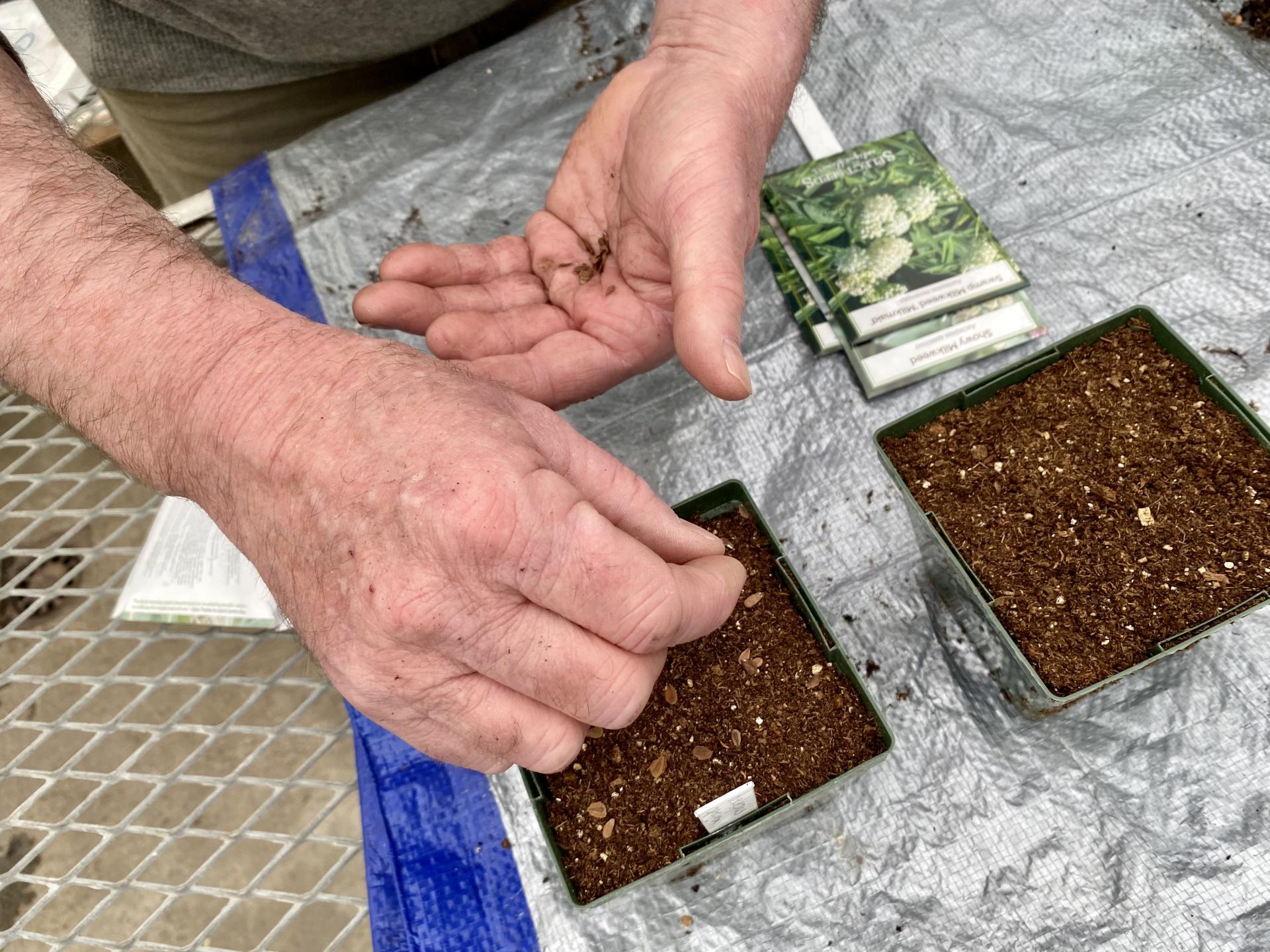You are here
Be a Better Gardener: Winter Sowing
Be a Better Gardener: Winter Sowing
By Thomas Christopher
Simplicity and an easy road to success is what Dolly Foster offered me in a recent conversation about winter sowing.
Dolly’s a horticulturist in Hammond, Indiana, and I contacted her because I prefer to start my plants from seed. That’s much cheaper than buying an equivalent number of already started plants from the garden center. Starting from seed also opens up a much broader range of choices. Instead of the handful of choices you’ll find for sale as plants, you will find thousands of species and cultivars in seed lists from specialist nurseries and plant societies. If you are devoted to native plants, like Dolly and me, you’ll also know that starting your natives from seed greatly increases the genetic diversity of what you grow and allows you to promote locally adapted populations.
One reason to avoid starting from seed, however, is the hurdles involved in the conventional approach. You need an array of grow lights – a sunny windowsill really isn’t adequate – and then you need to help the seeds break dormancy. Most often that means “moist chilling” the seeds. You must mix the seeds with moist sand, seal them in a plastic bag and storing them in the refrigerator for at least a month before sowing. Some natives require alternating periods of moist chilling with periods of warmth before the seeds will germinate. It all gets discouragingly complicated.
Dolly by contrast saves her seeds until the weather grows consistently cold. Then she takes recycled gallon milk or water jugs (they have to be made of transparent or translucent plastic), removes the caps, and punches a half dozen holes in the bottoms. She cuts around the jugs about halfway up, leaving a small bit of the wall intact to serve as a hinge. Folding back the top, she fills the bottom of the jugs with 4 inches of some moistened commercial potting mix. She sows the seeds at the appropriate depth – sprinkled on the surface for extra fine, dust-like seeds such as those of columbines, or as much as half an inch deep for jumbos such as sunflowers. She sticks a label inscribed with the type of seed with indelible ink into the potting mix, folds the top back and fastens it to the bottom with a band of duct tape. She writes the seed type onto the outside of each jug, again with an indelible marker, and then clusters the jugs together outside in a sunny spot exposed to the rain and the snow.
Dolly begins her sowing at the winter solstice, December 21 or 22, gradually adding more jugs as she has time until late winter or even very early spring before the weather warms. She checks the jugs periodically to make sure the potting mix inside is still moist – a moist jug is heavy to lift and there will be droplets of condensation clinging to the inside of the jug’s top. If the potting mix is drying out, she places the jug in a shallow pan filled with water to wick up the moisture.
Exposure to winter’s alternating cold and warm periods ensures that seeds treated this way, even those of persnickety natives, overcome their dormancy. As spring arrives, around the third week of March in her Zone 5b garden, Dolly begins watching for emerging seedlings. If a late winter cold snap threatens to freeze the new plants, Dolly covers her jugs with a sheet until the temperatures rise again.
When the soil in the garden has warmed to 55 degrees (around May 1, in Hammond), Dolly starts opening the jugs and transplanting the seedlings into the garden. There’s no need to worry about hardening off the seedlings as you must when they have been started indoors; the winter sown ones are already acclimated to the outdoor temperatures.
Dolly says this take-it-easy method of winter sowing works well with virtually any kind of hardy perennial and even cold hardy vegetable crops, anything other than true tropicals. That should satisfy me. I’m already saving jugs.
For more details about winter sowing, log onto the Berkshire Botanical Garden’s “Growing Greener” blog at berkshirebotanical.org to listen to the rest of my conversation with Dolly Foster.
Be-a-Better-Gardener is a community service of Berkshire Botanical Garden, located in Stockbridge, Mass. Its mission, to provide knowledge of gardening and the environment through a diverse range of classes and programs, informs and inspires thousands of students and visitors each year. Thomas Christopher is a volunteer at Berkshire Botanical Garden and is the author or co-author of more than a dozen books, including Nature into Art and The Gardens of Wave Hill (Timber Press, 2019). He is the 2021 Garden Club of America's National Medalist for Literature, a distinction reserved to recognize those who have left a profound and lasting impact on issues that are most important to the GCA. Christopher’s companion broadcast to this column, Growing Greener, streams on WESUFM.org, Pacifica Radio and NPR and is available at berkshirebotanical.org/growinggreener.
Help Our Garden Grow!
Your donation helps us to educate and inspire visitors of all ages on the art and science of gardening and the preservation of our environment.
All donations are 100 percent tax deductible.


